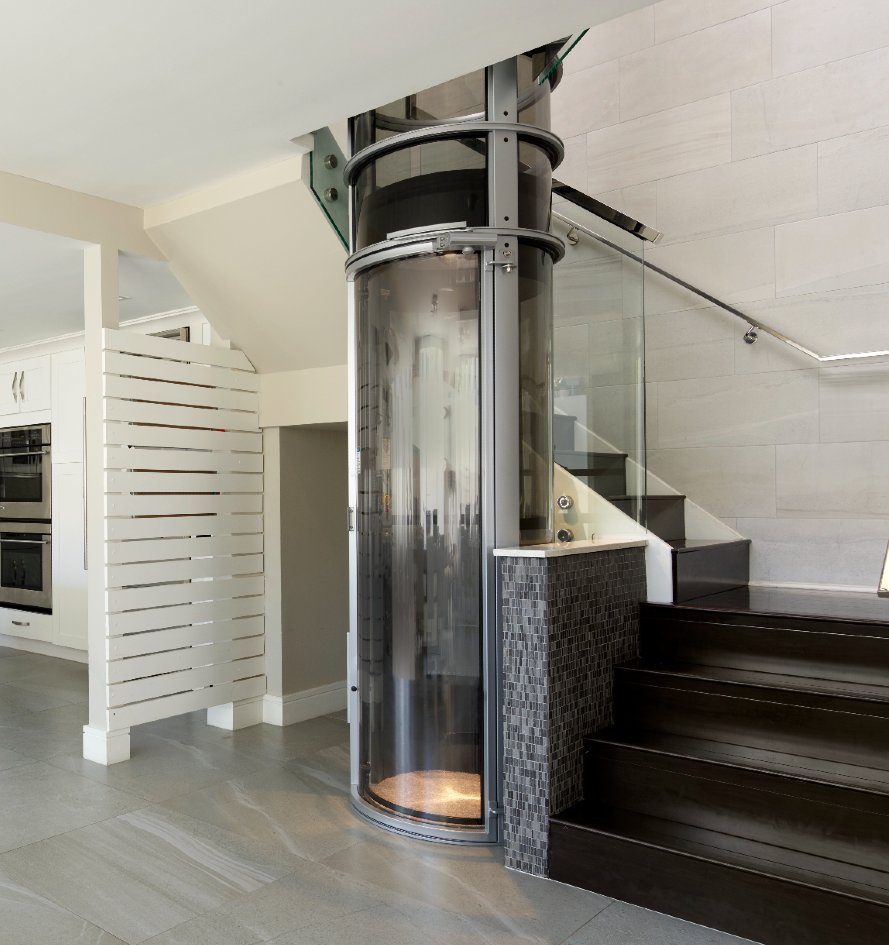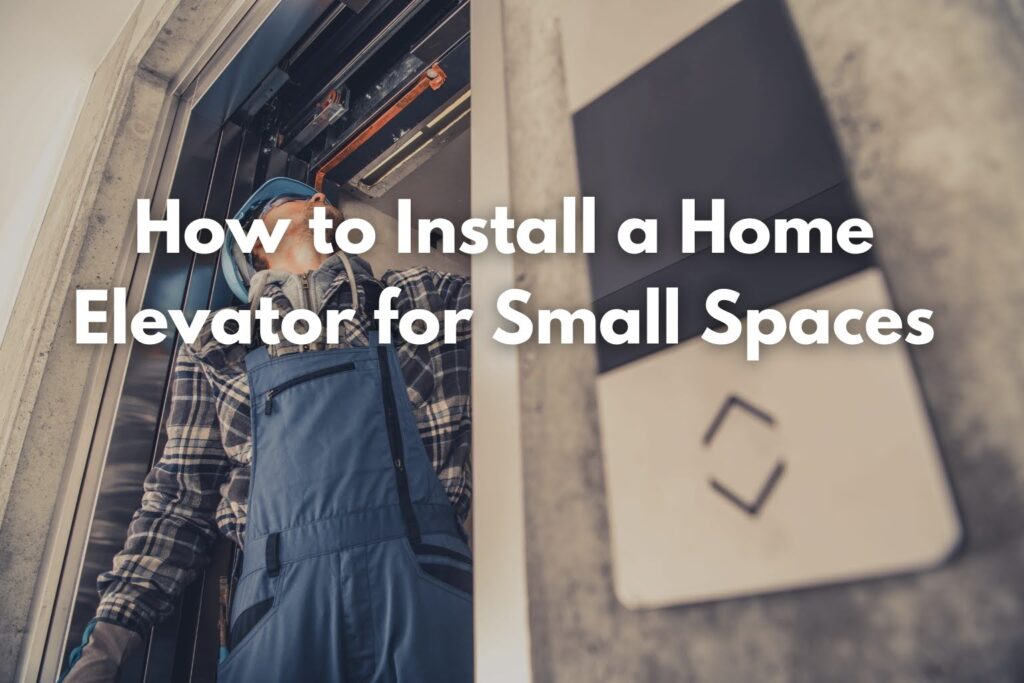Adding an elevator is a popular way for homeowners to improve convenience and home value. Small space elevators used to be uncommon. Now, compact lifts can fit into tight areas. With planning and expert help, a home elevator can increase access and comfort without major renovation. This guide gives complete guidance on how to install a home elevator for small spaces.
Choosing the Ideal Spot for Your Home Elevator
1. Central Yet Unobtrusive
The best location for a home elevator balances accessibility with subtlety. It should be easy to reach from all areas of the house but positioned to maintain the flow and design of your home. Consider the daily movement patterns of your household to identify a spot that enhances convenience without becoming a focal point.
2. Smart Space Utilization
Look at underused areas like corners in living rooms or spaces near the staircase. Even an existing closet can be transformed into an elevator space. The goal is to cleverly use available space without major alterations to the home’s layout. This approach can make the addition of an elevator surprisingly unobtrusive.
3. Creative Solutions for Limited Spaces
In homes where space is especially tight, integrating the elevator with the home’s external structure or making use of rarely used spaces, such as under the staircase, can be effective solutions. This approach not only saves space but can also add a unique architectural element to your home. These innovative solutions can turn a functional necessity into an aesthetic feature, enhancing the overall design of your space.
4. Balancing Function and Design
It’s not just about fitting the elevator in; it should also complement your home’s style. Strive for a design that serves its purpose without compromising the beauty of your interior space. This careful planning ensures the elevator is a seamless and attractive addition to your home. Keep in mind the interior design theme of your house to select materials and finishes for the elevator that blends harmoniously with your existing decor.
Types of Home Elevators Suitable for Small Spaces
Traction Elevators: Ideal for Compact Areas
In homes where space is a premium, traction elevators are a go-to choice. These elevators use a system of counterweights and cables, which makes their machinery less bulky. They’re a great fit for smaller homes because they don’t take up much room. Benefits include energy efficiency and quiet operation. However, they can be more expensive initially.
Hydraulic Elevators: Perfect for Comfort
For those prioritizing a smooth ride, hydraulic elevators are the answer. They operate using a piston and pump system. These elevators are renowned for providing a gentle and stable experience. However, they do require a separate machine room, which might be challenging in smaller homes.
Choosing What’s Best for Your Home
When deciding between traction and hydraulic elevators, consider your home’s design and available space. Traction elevators are better suited for narrow, taller areas due to their compact design. On the other hand, hydraulic elevators, with their broader machinery, are more appropriate for homes with more width than height. Your decision should also factor in your budget and specific needs to find the best fit.
Pre-Installation Considerations for Home Elevator Installation
Assessing Home Compatibility
Understanding Your Home’s Structure:
Begin by assessing key structural features of your home, like the age, architectural style, and the robustness of its load-bearing elements. This involves understanding how these factors might influence the installation process.
Adapting to Your Home’s Needs:
In many cases, particularly in older or smaller homes, structural enhancements may be necessary. This might mean reinforcing walls or floors to ensure they can support the weight and operation of the elevator. Additionally, consider the impact of these changes on the overall aesthetics and functionality of your home.
Planning with Professionals
Seeking Expert Advice:
Engaging with architects and contractors, especially those experienced with high-level elevator services, is crucial. These experts can assess your home’s current state and propose viable solutions for incorporating an elevator. Their expertise ensures that the installation aligns with both your home’s aesthetic and functional needs while also adhering to safety and regulatory standards.
Designing Modifications:
Develop a plan for any structural changes required. This could range from minor modifications to more extensive renovations, depending on the condition and design of your home.
Preventing Future Problems:
A thorough review with these professionals not only helps in identifying immediate structural needs but also in foreseeing any long-term implications of installing an elevator. This proactive approach is key to ensuring a smooth and successful installation process.

Installation Dimensions
Understanding Elevator Space Requirements
To ensure a seamless elevator installation, grasping the space needed is crucial. The space required varies depending on the elevator type and your home’s structure. Typically, traction elevators, operating on counterweights and cables, need less space. In contrast, hydraulic elevators, known for their smooth rides, require more room due to an additional machine room.
Tailoring to Your Space
Customizing these dimensions to fit your unique space is possible. However, precision is key. Accurate measurements are essential to align with the chosen elevator’s specifications. This precision avoids potential delays and extra costs, underlining the importance of detailed planning and careful execution.
Why Exact Measurements Matter
Incorrect measurements can disrupt the entire installation process. Even slight discrepancies in dimensions can lead to significant project delays and additional expenses. Thus, meticulous measurement and planning are not just recommendations but necessities for a successful elevator installation in your home.
Electrical Requirements for Home Elevator Installation
Understanding the Power Needs:
Every home elevator requires a specific type of power source to function optimally. Generally, this involves a 240-volt, 30-amp dedicated power line. This specification is not arbitrary but is carefully chosen to match the power demands of the elevator while maintaining efficiency.
It’s crucial to understand that this dedicated line is not just about powering the elevator but also about ensuring it operates smoothly without affecting other home appliances or causing electrical issues.
Evaluating Home Electrical Upgrades:
In many homes, especially older ones, the existing electrical system may not be equipped to handle the additional load of a home elevator. This necessitates an electrical upgrade, which could include adding a new circuit specifically for the elevator or updating the entire electrical panel to enhance its capacity.
These upgrades are important to prevent issues like power outages or circuit overloads, ensuring that both the elevator and your home’s electrical system work harmoniously.
Hiring a Professional Electrician:
The role of a qualified electrician in this process cannot be overstated. They ensure that all electrical installations and upgrades are done in compliance with local building codes and safety standards. Their expertise is crucial in assessing your home’s current electrical capacity, identifying the need for upgrades, and executing these modifications efficiently.
Furthermore, a professional electrician can provide valuable insights on maintaining the electrical aspects of the elevator post-installation, contributing to its longevity and reliability.
By carefully addressing these electrical requirements and seeking professional guidance, homeowners can ensure a safe, efficient, and code-compliant installation of their home elevator. This attention to detail not only guarantees the elevator’s optimal performance but also contributes to the overall safety and integrity of the home’s electrical system.
Safety Considerations
Understanding and Adhering to Regulations:
It’s essential to follow local building regulations and specific safety standards, notably the ASME A17.1-2016. These rules cover critical aspects like the allowed space between the elevator gate and the landing sill, ensuring safe door operations, and setting emergency protocols.
Essential Equipment for Safety:
Every home elevator must be equipped with certain safety features. This includes automatic braking systems to prevent accidental falls, emergency stop buttons for immediate halting of the elevator, and backup power supplies to ensure functionality during power outages.
Ensuring Long-Term Safety:
To guarantee these safety systems work effectively over time, regular maintenance and inspections are crucial. This involves routine checks by professionals to identify and fix any potential issues, ensuring the elevator remains a safe mode of transportation within the home.
By simplifying the language and adding these subheadings, the section becomes more accessible and provides a clear, step-by-step understanding of the safety considerations involved in installing a home elevator.
The Installation Process Simplified
1. Site Preparation: Laying the Groundwork
Before anything else, the area where the elevator will be installed needs to be prepped. This involves clearing the space, ensuring it’s level, and verifying that no obstructions will interfere with the construction.
2. Building the Hoistway: Creating the Elevator’s Path
Next, a hoistway, or shaft, is constructed. This is the vertical space through which the elevator will move. Accuracy in building the hoistway is crucial for a smooth elevator operation.
3. Installing the Elevator Mechanics: Bringing the Elevator to Life
Once the hoistway is ready, the actual elevator mechanism is installed. This step includes setting up the cables, pulleys, and the elevator car itself. The complexity of this stage depends largely on the elevator type.
4. Timing and Communication: Staying in the Loop
The duration of the installation can vary, often depending on the elevator’s design and the specifics of your home. Regular communication with the installation team is key to staying updated on the project’s progress and addressing any unexpected challenges promptly.
5. Safety Checks and Final Touches: Ensuring Top Performance
After the installation, it’s crucial to perform detailed safety checks and fine-tuning. This ensures that every aspect of the elevator functions reliably and safely, providing peace of mind for everyday use.
Conclusion
Adding an elevator to a small home is a challenging yet rewarding project. It makes your home more accessible, increases its value, and enhances living comfort. To ensure a smooth installation, plan carefully, understand your needs, and work with skilled professionals. Pay attention to each step of the process and get advice from experts. This will help make your elevator not just useful, but also safe and a nice addition to your home’s look.






